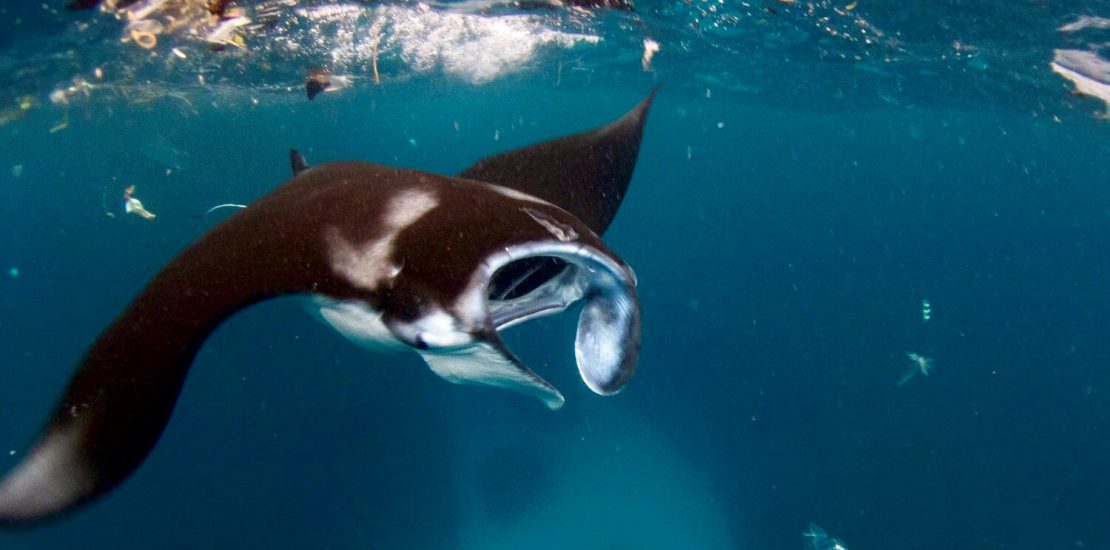MMF study researching microplastics in Manta Ray feeding grounds
- September 27, 2021
- Posted by: Lyn Wilson
- Category: Case Studies, Environmental, Research Papers, Water Issues, Asia

Marine Megafauna Foundation (MMF) has been following a new study to discover what kinds of plastics Manta Rays are accidentally ingesting from their feeding grounds. This research is of crucial importance with Manta Rays being large filter-feeders that can easily ingest plastics.
The research uses visual sorting and chemical analysis to identify which polymers (plastic’s building blocks) make up the material floating on the surface waters of Manta Bay in Indonesia. As each polymer type has different properties, understanding the kinds of plastics manta rays are consuming, and how toxic they are to them, will help assess the potential risks of plastic ingestion to these threatened species.
The most common polymers were polyethylene, polypropylene, polystyrene (i.e., styrofoam), and polyester. Some of these plastics have known toxicological effects and can adsorb and leach other pollutants from the surrounding environment. The type of plastic can also influence which harmful microbes hitchhike onboard
The research* has tested a more cost-effective methodology combining visual and chemical analyses and found that visual inspection could adequately predict the chemical composition of seven out of ten visually grouped plastics.
Plastics in marine environments vary in their physical and chemical properties, influencing their risk to ocean life once ingested. To assess this risk, the plastics in a critical feeding habitat off Nusa Penida, Indonesia have been characterized by examining the color and polymer composition of small plastic samples.
MMF project leader and head author of the study, Janis Argeswara, states:
“Plastics are not created equal. We knew that a variety of plastics were floating around Manta Ray feeding grounds and being consumed by feeding Manta Rays. To understand the potential damage that these plastics might cause, we need to know what these plastics are made of, especially small-sized plastics, or microplastics.”
Dr. Elitza Germanov, MMF Senior Scientist and co-author of the study, comments:
“Confirming polymer types of microplastics helps identify their origin, which is important for directing mitigation efforts. The overwhelming majority of plastics in these critical habitats are made of polymers commonly used in packaging materials and household items. Thus, improved waste management will need to go hand-in-hand with extending the responsibility of producers to reduce the amount of single-use plastics and packaging materials released into local consumer markets.”
In 2015, Indonesia was ranked as the second-worst marine plastic pollution producer globally and is hoping to substantially limit its plastic pollution problem by 2025. Several plastic mitigation efforts have been put in place in the last few years. However, plastic that has already entered the marine environment will persist for decades and continue to enter food webs, posing long-term implications to threatened marine species, such as Manta Rays.
*published in Marine Pollution Bulletin
